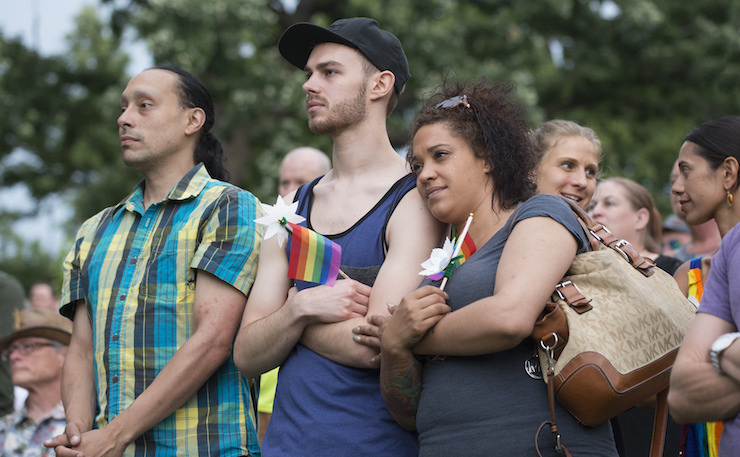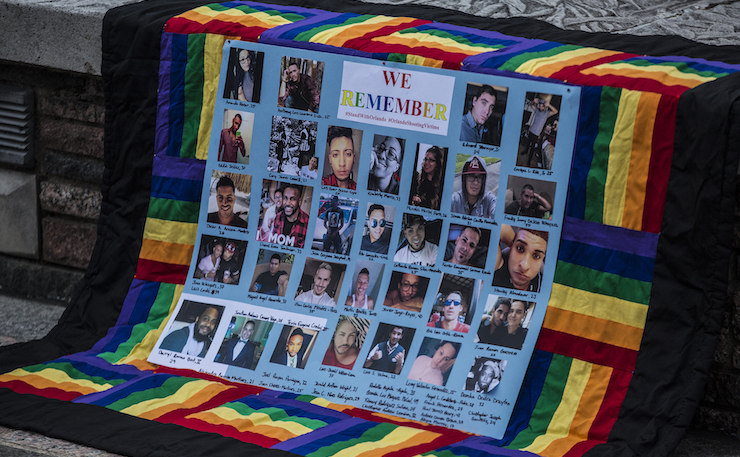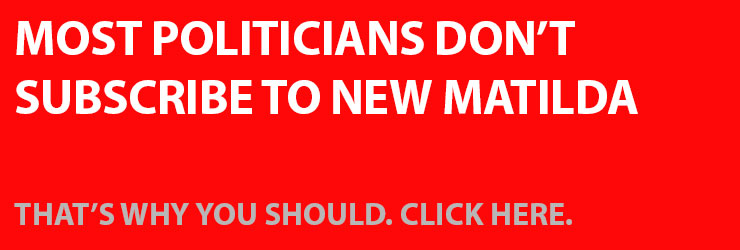Though it’s easy to focus on a specific calamity, the violence faced by LGBTQI people goes far beyond the direct and disturbing manifestation witnessed in Orlando, writes Liam McLoughlin.
In 2008, a poor African-American transgender woman named Duanna Johnson was arrested by police in Memphis, Tennessee. In a city with a history of black protest against racially motivated police abuse, Johnson was baselessly charged with prostitution. When she refused to answer to homophobic and transphobic slurs in custody, she was severely beaten and pepper-sprayed. Although the incident was captured by surveillance cameras, local authorities refused to charge the officers involved.
Johnson spoke out about the brutality and according to the Mid-South Peace and Justice Center, she became the “public face of our community’s campaign against racism, homophobia and transphobia”. Nine months later she was murdered in downtown Memphis with a single bullet to the head. The police found no suspects and no motive for the murder.
Between 2007 and 2008, the incidences of reported American police violence against LGBT people increased by 150 per cent. The Southern Poverty Law Center found LBGT people in the US suffer twice the rate of violent hate crime compared to Jews or African-Americans, four times that of Muslims and 14 times that of Latinos. In 2014, a majority of Americans thought gay sex was morally unacceptable and 14 per cent believed AIDS might be God’s punishment for immoral sexual activity. More than half of LGBT-identified people reported concern about falling victim of a hate crime. Between 2004 and 2014 the share of hate crimes based on sexual orientation grew.
In the first 10 weeks of 2016 the Human Rights Campaign fought nearly 200 anti-LGBT bills across 34 US states, including Florida.
And in the early hours of June 12 at an LGBT nightclub in Orlando called Pulse, 29 year-old Omar Mateen killed 49 people and injured 53 more in the worst mass shooting in modern American history.
The Christian Right has introduced 200 anti-LGBT bills in the last six months and people blaming Islam for this. No. #PulseNightclub
— Chase Strangio (@chasestrangio) June 12, 2016
According to establishment media and politicians, Mateen was inspired by ISIS to engage in a gruesome act of Islamic terrorism which was an attack on freedom and “an assault on every one of us”. This narrative has taken hold, despite his father’s comments that “this had nothing to do with religion” and everything to do with homophobia.
Opportunistic politicians and media outlets across the West have descended like vultures to frame this as yet more damning evidence against Islam and further justification for intensified militarism, police powers, and surveillance.
Malcolm Turnbull’s response was typical: “We stand in solidarity with the people of the United States as they stand up to this terrorist, violent, hate-filled attack, whether it is in the skies above Syria and Iraq, in Afghanistan or on our borders”.
Refugee survivor and ex-detainee organisation RISE articulated the crass and cynical inaccuracy of this typical establishment line.
“Similar to his response after the Brussels attack, Prime Minister Malcolm Turnbull has used the tragic events of Orlando to make a ridiculous link between refugees and terrorism. To use the murder of innocent people as an opportunity to demonise innocent refugees and justify bombings and militarised border control is pathetic, desperate and utterly racist.”
Yet again the government/media nexus is using the murder of innocent people to justify yet more violence against other innocent people.
Understanding the distinction between the highly visible direct violence of Orlando and the less visible cultural and structural violence at the root of such attacks is vital if we are ever going to escape this cycle of horror.
The Violence Triangle: Direct, Structural And Cultural Violence
Norwegian sociologist and peace researcher Johan Galtung’s “Violence Triangle” is a useful tool to help us understand Orlando and its aftermath. Galtung distinguishes three kinds of violence and they are causally linked.
The first is direct violence. This includes mass shootings, murder, rape, and assault – highly visible forms of violence in which the perpetrators are clearly identifiable individuals. The Orlando shooting is the latest and worst example of the prevalent direct violence which is directed at LGBTQI communities.
This form of violence dominates media coverage for several reasons. It accords with the doctrine of individual responsibility which prevails under neoliberalism and deflects responsibility from structures of power. It’s also a simple and compelling story which is big business for the media.
This is where mainstream coverage of Orlando begins and ends. At worst the homophobic nature of the attacks is erased and drowned out by the drum beat of Islamophobic rhetoric. At best the violence is described as a homophobic “act of hate” by a deeply disturbed individual.
The media wilfully ignores the structural and cultural violence upon which direct violence depends. These are more complex and less visible types of violence.
Structural violence is the exploitation and injustice built into our society. Galtung writes that structural violence “shows up as unequal power and consequently as unequal life chances”. It’s the violence which generates extreme wealth for the 1 per cent, poverty for the many and privileges some classes, genders, nationalities, religions and ethnicities over others. It’s about institutionalised forms of discrimination and exclusion and ingrained inequalities in access to education, resources and respect. The 200 anti-LGBT bills proposed in states across America this year would entrench structural violence against queer communities.
In responding to the Orlando massacre, the establishment avoids linking direct LGBTQI violence to structural violence at all costs. Blame Mateen, blame ISIS, blame Islam, blame anything but the homophobia, discrimination, and disrespect towards LGBTQI people actively fostered by institutions of power right across the United States.

The ruling classes just as steadfastly ignore the role of cultural violence in contributing to Mateen’s heinous actions. Galtung defines cultural violence as the attitudes and beliefs which “can be used to justify or legitimise direct or structural violence”. Religion, ideology, art, science, education and the media can all be responsible for cultural violence. It’s not hard to see connections between the homophobic rhetoric of the Christian right, the structural violence of anti-LGBTQI laws, and the direct homophobic violence of Omar Mateen.
Normalising Violence
If we want to understand how structural and cultural violence impact LGBTQI communities, it’s worth reading activist and writer Kay Whitlock.
The book she wrote in 2011 with Andrea Ritchie and Joey Mogul called Queer (In)Justice: The Criminalisation of LGBT People in the United States showed a feedback loop between the criminalisation of queer people and societal homophobia and transphobia. It shows in detail how media archetypes of the “queer killer”, the “sexually degraded predator”, the “disease spreader” and the “queer security threat” inform the ways sexuality is policed, prosecuted and punished. Its study of police harassment and brutality towards queers, especially transgender women of colour like Duanna Johnson, highlights the intersection of structural, cultural and direct violence.
Whitlock’s comments in subsequent papers and interviews are especially enlightening when thinking about how structural and cultural factors may have influenced Mateen. In a 2012 discussion paper called Reconsidering Hate: Policy and Politics at the Intersection, Whitlock writes:
“Hate violence is portrayed as individualised, ignorant, and aberrant, a criminal departure by individuals and extremist groups from the norms of society, necessitating intensified policing to produce safety. The fact is many of the individuals who engage in such violence are encouraged to do so by mainstream society through promotion of laws, practices, generally accepted prejudices, and religious views. In other words, behaviour that is racist, homophobic, transphobic, anti-Semitic, anti-Muslim, and anti-immigrant…does not occur in a political vacuum.”
Her explanation for this focus on direct violence is succinct.
“It’s so much easier to place the blame for violence directed against entire groups on criminal misfits, loners, and crackpots than to challenge the unspoken public consensus that permits broader cultures and structures of violence to exist.”
In a 2015 interview for The Public Eye, Whitlock shows us how these cultures and structures normalise violence.
“What is called “hate violence”—violence directed at vulnerable and marginalised groups—is not abhorrent to respectable society. On the contrary, respectable society has provided the models, policies, and practices that marginalise people of colour, queers, disabled people, and in many respects, women.
We fixate on spree killings and assassinations because they’re so visibly terrifying…but regardless of who’s in power, we also have these structural forms of violence that continue year after year in the most respectable civic and private arenas. The violence is steadfast, consistent, and it’s absolutely massive. I’m talking about the violence of prisons, detention centres, psychiatric hospitals, and public schools with school officers who are armed to the teeth and who have absolute discretionary power to send kids into the criminal/legal system for minor infractions. We have lots of violence against people with disabilities who are penned up in institutions where someone has absolute power over them.”
Tackling these ingrained cultures and structures of violence is the only chance we have of escaping the recurring nightmare of direct violence.
From Islamophobia To Queer Justice
Barring Donald Trump and Pauline Hanson, Malcolm Turnbull gave the worst possible response to the Orlando shooting. He mobilised the Islamophobic frame when he linked refugees to terrorism in showing “solidarity with the people of the United States”.
No Malcolm. Solidarity is not ramping up the “War on Terror” with more militarism and greater police powers. Solidarity is not dog-whistling to bolster your poll numbers in the marginals. Solidarity is not using the deaths of people from a persecuted minority to justify your persecution of another minority on Nauru and Manus.
Solidarity means resisting the erasure of LGBTI communities. It means accurately describing the causes of violence and offering historical, economic and social context for such events. It means highlighting structural and cultural violence and debating ways to dismantle violent policies and attitudes to LGBTI communities. It means confronting the gun lobby and opposing the corruption of our political systems. It means investigating community-based approaches to reducing violence. It means exploring ways to create more just, compassionate, equitable, kind, and loving societies.
It also means really listening to LGBTQI voices, like that of Duanna Johnson, whose courageous resistance to racism, homophobia and transphobia came at the cost of her life.
Or that of Steven W Thrasher, who wrote this in The Guardian.
“In this moment, let us not become nationalistic, or prejudiced, or vengeful. Let us not perpetuate the American cycle of violence. Let us interrupt this nightmare as the creative, loving, justice-seeking American queers that we are, who know well how to look death in the eye and still imagine a new, better living world.”
Donate To New Matilda
New Matilda is a small, independent media outlet. We survive through reader contributions, and never losing a lawsuit. If you got something from this article, giving something back helps us to continue speaking truth to power. Every little bit counts.





